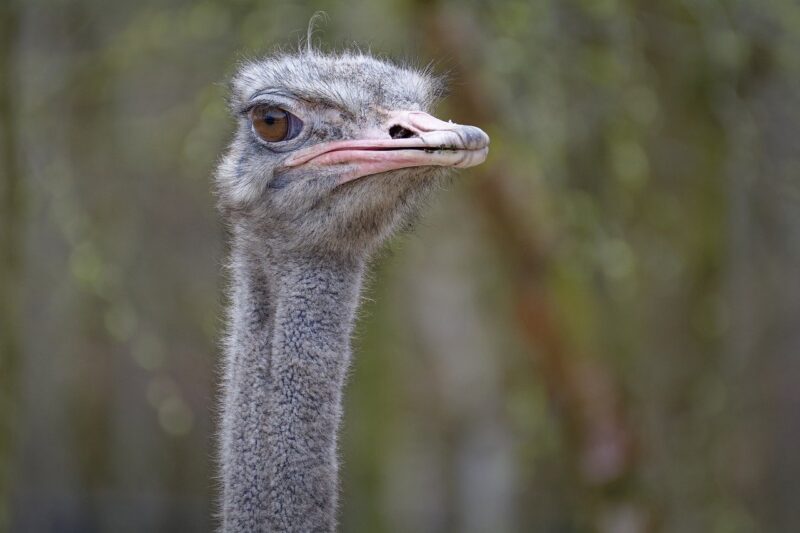The Ethics of Zoos: Understanding the Pros and Cons of Captive Animal Care
November 15, 2024

Zoos have long been the subject of heated debate. While many people find joy in seeing wild animals up close, others criticize the ethics of keeping these creatures in captivity. This article delves into the complex world of zoos, exploring the pros and cons of captive animal care, and weighing their educational value against welfare concerns.
1. The Role of Zoos in Conservation
Many modern zoos claim conservation as one of their primary missions. They house endangered species and implement breeding programs aimed at revitalizing populations that have dwindled in the wild. Importantly, zoos can play a crucial role in species preservation:
- Captive Breeding Programs: Zoos can breed animals in a controlled environment to boost endangered populations. Success stories like the California condor and the Arabian oryx demonstrate how captive breeding can help restore species and eventually reintroduce them into their natural habitats.
- Research and Medical Advances: Zoos provide opportunities for research on animal behavior and genetics, which is often impossible to achieve in the wild. Studies conducted in zoos can lead to advancements in veterinary care and conservation techniques beneficial for both captive and wild animals.
- Public Awareness and Education: Many zoos offer educational programs and exhibits that increase public understanding of wildlife conservation issues. By fostering connections between visitors and animals, zoos help inspire a sense of responsibility toward conservation efforts.
Despite these benefits, critics raise valid concerns regarding the effectiveness of zoos in achieving their conservation goals.
2. The Ethical Dilemmas of Captivity
In the discussion of zoos, one must consider animal welfare and the ethical implications of keeping wild animals in confined spaces. Critics argue that:
- Limited Space and Natural Behavior: Animals in zoos often live in enclosures that fail to replicate their natural habitats, resulting in behavioral issues such as pacing, over-grooming, and other signs of stress and anxiety. These behaviors demonstrate the difficulties of maintaining physical and psychological well-being in captivity.
- Life Expectancy vs. Wild Living: While some species may live longer in captivity than in the wild due to absence of predators, the quality of life in a confined space can be contentious. Many believe that a longer lifespan in a zoo does not justify a lack of natural behaviors and experiences essential for a species’ well-being.
- The Ethical Justification of Captivity: The moral argument centers around the rights of animals. Should humans have the authority to confine animals for entertainment or educational purposes? These ethical concerns weigh heavily on the debate regarding captive animal care in zoos.
Both sides present compelling arguments, making the conversation surrounding zoos both intricate and multifaceted.
3. The Educational Value of Zoos
While the ethical implications are significant, the educational contributions of zoos cannot be overlooked. Proponents argue that zoos engage visitors in a meaningful way, fostering a passion for wildlife and conservation. Educational programs often include:
- Interactive Exhibits: Many zoos create immersive environments and activities that allow visitors to learn through experience. Touch tanks, behind-the-scenes tours, and animal encounters can enhance the educational experience.
- Educational Workshops and Presentations: Zoos frequently offer workshops and presentations focusing on wildlife conservation, animal care, and biodiversity. These programs can empower the next generation of conservationists.
- Collaborative Conservation Initiatives: Some zoos partner with wildlife institutions and conservation organizations to conduct fieldwork and research, allowing visitors to see real-time impacts of conservation efforts.
While educational benefits exist, it is essential to consider whether such knowledge can be derived from alternative methods, such as virtual experiences or wildlife documentaries, without confining animals to captivity.
4. Alternatives to Traditional Zoos
As public sentiment shifts towards animal welfare, alternative models to traditional zoos are gaining traction. Some of these options include:
- Sanctuaries: Wildlife sanctuaries focus on providing a safe and natural habitat for rescued or retired zoo animals. Unlike traditional zoos, sanctuaries aim to rehabilitate animals, allowing them the freedom to live out their lives in a more natural setting.
- Safari Parks: These parks often provide more expansive enclosures where animals can roam and exhibit more natural behaviors. Visitors drive through these parks, seeing animals in a habitat that closely resembles the wild.
- Virtual Reality Experiences: Advances in technology have enabled innovations in wildlife education. Virtual reality and online platforms can offer immersive learning experiences, enhancing public understanding of animals without physical captivity.
The emergence of these alternatives may point to a future where practices evolve toward more humane approaches.
5. Finding Common Ground: The Future of Zoos
The conversation around zoos is far from black and white. However, engaging in dialogue about their role in conservation, education, and animal welfare is crucial for improvement. The future of zoos may rely on:
- Improved Enclosures: Focus on designing spaces that more closely mimic natural habitats helps to enhance animal welfare and allow species-specific behaviors to flourish.
- Higher Transparency and Ethical Standards: Zoos must advocate for transparency regarding animal care, conservation efforts, and educational impacts to build public trust and demonstrate ethical responsibility.
- Active Involvement in Conservation Projects: Collaborating with wildlife organizations and participating in global conservation efforts enhances the credibility and ethical standing of zoos.
By addressing these aspects, zoos can potentially find a balance that caters to both conservation initiatives and animal welfare.
Conclusion: The Ethical Path Forward
The ethics of zoos present a complex tapestry of arguments for and against the practice of keeping animals in captivity. While they serve as safe havens for endangered species and hold valuable educational potential, ethical dilemmas regarding animal welfare cannot be ignored. As society continues to place emphasis on animal rights, the evolution of zoos toward more humane practices must be a priority.
It is incumbent upon us to balance enjoyment in observing wildlife with genuine respect for living beings, striving for solutions that envision a future where both conservation and animal welfare are prioritized. The conversation surrounding zoos should encourage ongoing evaluation, adaptation, and commitment to ethical standards that advocate for the welfare of all animals.








